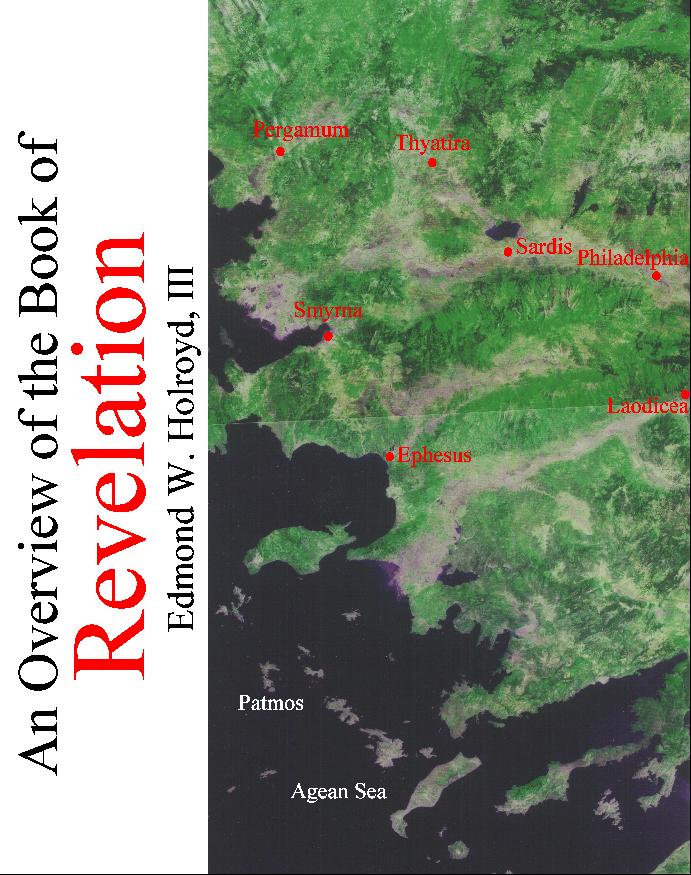
Introduction: This course was first written for a junior high Sunday school class in Miles City, Montana, in the Spring of 1976. It was designed as a self-study course for a ten week period. That way the good students could learn something even if some in the class were disruptive. Furthermore, classes were easily made up and all students could proceed at their own pace. Since then many adults have enjoyed this course. There have been some revisions, in 1996 and 2018, mostly towards the beginning of this study, and with illustrations improving with technology. The insights of several books and teachers have been merged in this study guide.
The continuing instructions, in bold print, ask you to read directly the words of Revelation and related passages. You are asked to fill in the blanks with answers that may seem trivial. It will be difficult to get a wrong answer unless you fail to read the Scriptures. While the original edition was dependent on a Revised Standard Version Bible, the revision of 1996 was keyed primarily to a New International Version, which is the version sometimes quoted. If you do not know where a book of the Bible is located, check the index in the front of your Bible for a page number. You will be asked many times to read a relevant portion from some other part of the Bible.
This course is mainly an overview. It introduces the apocryphal language style and its code words and numbers. Its purpose is to try to show what John was trying to communicate to his flock on the mainland of what is now western Turkey. It also tries to show what the Holy Spirit wants us to know in today's world and times. The Book of Revelation is primarily a book of hope and comfort for true Christians undergoing severe persecution. The detail of the events of the Last Days is secondary.
Many other books and pamphlets have been written over the ages, each with some special insights. Many writers have been proven wrong in their interpretations of the details. Many diverse interpretations have contributed to the formation of denominations of Christians and cults. You are encouraged to read other writings on the Book of Revelation and regard this course as merely an introduction with a particular point of view.
Like all other works, this course probably contains errors and certainly incomplete development of various topics. My attitude is that no one person at the time of the First Coming of Jesus Christ correctly understood all of the Old Testament prophesies. Yet the Scriptures were all true. Similarly, I claim that no one person, prior to its happening, will have a correct grasp of all of the details, gleaned from Scripture, of the Second Coming. Yet again the Scriptures will all be true. Some prophesies have had multiple fulfillments over time. They had one meaning for near the time of their utterances and another meaning at a later time, like the messianic prophesy in Isaiah 7:14, naming Immanuel. Others have only one meaning intended by God but people have differing interpretations. "Even the angels long to look into these things." (1 Peter 1:12, NIV)
I am a retired scientist (B.S. in astrophysics, Ph.D. in atmospheric science, and continuing education in geology) and a retired graduate school professor in remote sensing (usually viewing the Earth from aircraft and satellite) and digital image processing. I am therefore used to the physical world and its evidences. Therefore, my illustrations are of physical things that confirm the reality of locations and history. I am also used to walking by faith and acknowledge a spiritual realm beyond the measurement capability of our instruments. Those things are more challenging to illustrate, and so the illustrations become few in the later chapters. As of this 2018 edition, I can be contacted at my home address: Dr. Edmond W. Holroyd, III; 5395 Howell Street.; Arvada, CO 80002-1523, U.S.A.; phone (303) 279-5395; eholroyd@juno.com; www.EdHolroyd.info.
Back, Next
Background,
Introduction, Lesson
1,
2,
3,
4,
5,
6,
7,
8,
9,
10,
11